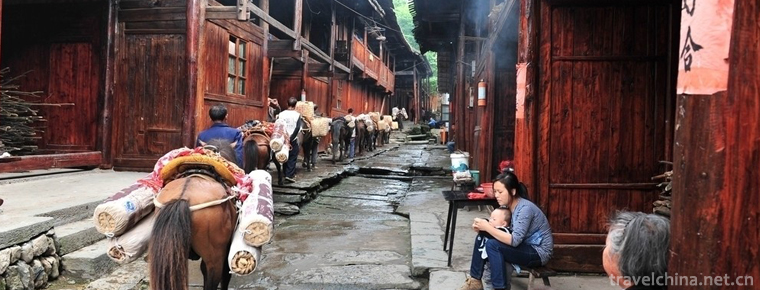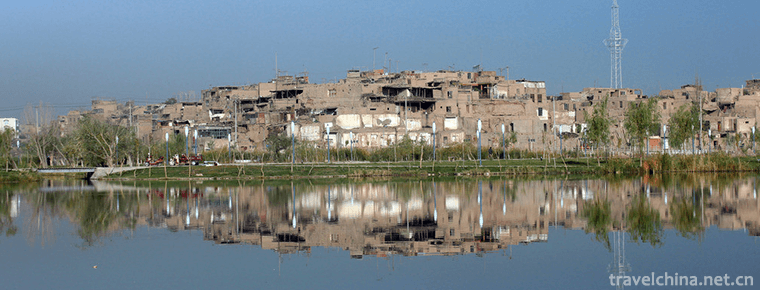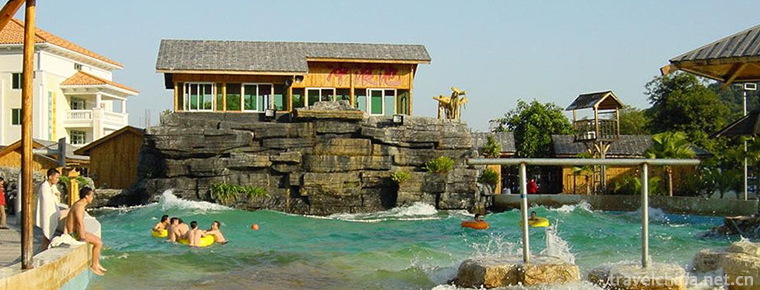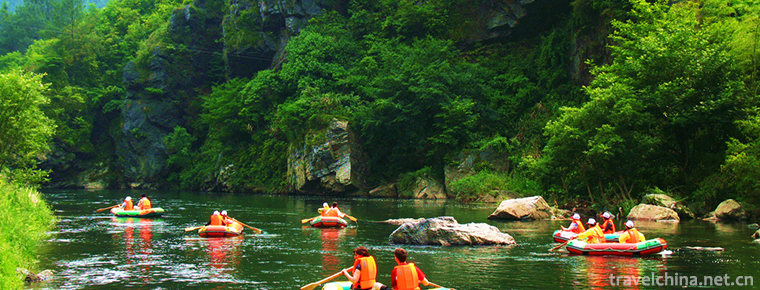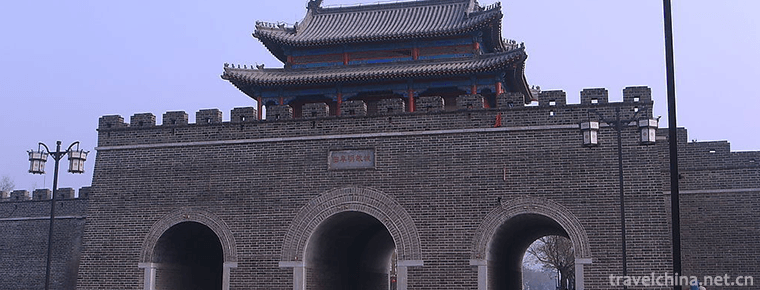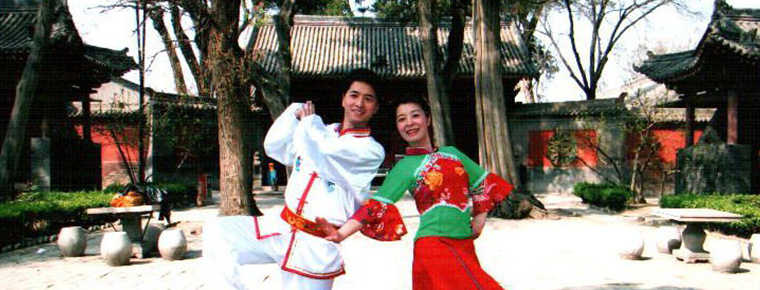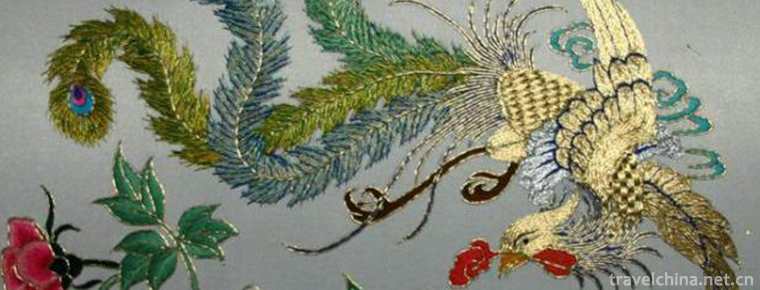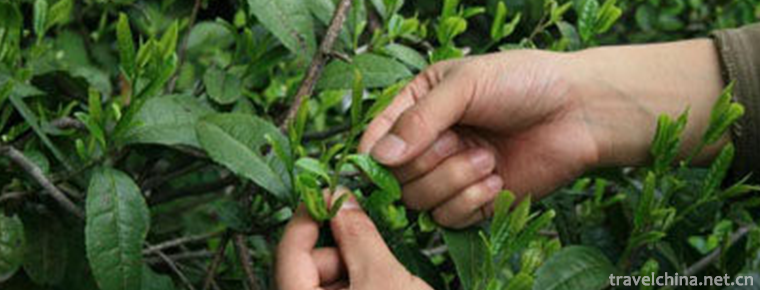Siguniang Mountain Scenic Area
Siguniang Mountain Scenic Area
Siguniangshan scenic area, located in Siguniangshan Town, Xiaojin County, Aba Tibetan and Qiang Autonomous Prefecture, Sichuan Province, belongs to Qionglai mountain range of Qinghai Tibet Plateau, 220 km away from Chengdu. Siguniang mountain is adjacent to Wolong National Nature Reserve. Its geographical coordinates are between 102 ° 42 ′ 30 ″ - 102 ° 58 ′ 40 ″ E and 30 ° 54 ′ 16 ″ - 31 ° 16 ′ 21 ″ n.
The core scenic spots of Siguniangshan scenic area are shuangqiaogou, changpinggou, Haizigou, yaoniangshan (yaomeifeng), sanguangshan, erguangshan and Daguangshan. The mountain is steep and modern glaciers are developed. There are 52 snow peaks with an altitude of more than 5000 meters, which are covered with snow all the year round. The main peak, Siguniang mountain, is 6250 meters above sea level. It is the highest peak in Qionglai mountains, the second peak in Sichuan and the third peak in Hengduan Mountains.
Siguniang mountain scenic area is a world natural heritage, a national scenic spot, a national geopark, a National Nature Reserve, a world heritage site of Sichuan Giant Panda habitat, and one of the top ten mountaineering mountains in China.
History of development
In 1994, Siguniang mountain was rated as a national key scenic spot.
In 1995 and 1996, Siguniang mountain was established as a national scenic spot and nature reserve with the approval of the State Council.
In 1996, the scenic area of Siguniang mountain and the surrounding Jiajin mountain were listed as national nature reserves with a total area of 1375.85 square kilometers.
In 2005, Siguniang mountain scenic area was identified as a national geopark.
In July 2006, Siguniang mountain scenic area was approved by UNESCO as an integral part of the world natural heritage site of giant panda habitat in Sichuan, China.
In 2003, the office of Aba Prefecture People's government determined that the administrative bureau of Siguniangshan National Nature Reserve is a county-level public institution with independent legal personality and belongs to public welfare institution.
geographical environment
Geomorphic features
Siguniang mountain is located in the eastern edge of the Qinghai Tibet Plateau, the first step of Chinese geomorphology. It belongs to the transition zone from Sichuan basin to Qinghai Tibet Plateau in the second step. The tectonics belongs to the Songpan Ganzi fold belt in the geosyncline region of China. The geomorphic division belongs to the Western Sichuan high mountain plateau area, the high mountain gorge Valley sub region, and the high mountain canyon area in the middle reaches of Dadu River. The main landform types are: dry warm valley (semi-arid Valley) landform, high mountain landform and extremely high mountain landform. The surface of Siguniang mountain is mainly composed of Mesozoic and Paleozoic Sandstone, slate, marble, limestone and crystalline limestone.
The mountain is steep and modern glaciers are developed. There are 52 snow peaks with an altitude of more than 5000 meters, which are covered with snow all the year round. The main peak, Siguniang mountain, is 6250 meters above sea level. It is the highest peak in Qionglai mountains, the second peak in Sichuan and the third peak in Hengduan Mountains.
Climatic characteristics
Siguniangshan scenic area belongs to subtropical monsoon climate. Due to the great difference of terrain height in the area, the mountain climate changes obviously with the change of altitude. From the wori River Valley in the southwest corner of the reserve to the top of the main peak, a complex vertical climate belt spectrum is formed, showing the vertical distribution of temperate zone, cold temperate zone, sub frigid zone, frigid zone and permafrost zone. The annual average temperature in the reserve is 5.9 ℃, the average temperature at the top of Siguniang mountain is 17.1 ℃, and the frost free period is 78 days. The dry rainy season is obvious in the area, and the distribution of precipitation season and region is uneven. The annual rainfall is 931.5mm. The sunshine is abundant, the sunshine percentage is as high as 51%, and the annual average sunshine hours are 2265 hours.
natural resources
Animal resources
There are about 46 species of mammals, belonging to 7 orders and 20 families; 7 species of fish, belonging to 2 orders and 3 families; and 74 species of birds, belonging to 3 orders and 27 families. There are 31 species of national protected animals, including 11 national first-class animals: 7 kinds of mammals, including giant panda, golden monkey, forest musk deer, white lipped deer, takin, leopard and snow leopard; 4 kinds of birds, including vultures, hazel chickens, pheasants and pheasants; 22 kinds of national second-class protected animals, including macaques, jackals, black bears, brown bears, little pandas, yellow throats, stone Martens, otters, forest musk deer, red deer, and iguana There are blood pheasant, alpine vulture, pheasant quail, Tibetan pheasant, Tibetan snow pheasant, grey forest bird, red bellied Tragopan, etc.
plant resources
Siguniang mountain area belongs to the coniferous forest zone of alpine gorge in Western Sichuan. The vegetation in turn includes semi-arid Valley vegetation such as Seabuckthorn and sparse shrub, mountain evergreen coniferous (dark coniferous forest), deciduous broad-leaved mixed forest, subalpine shrub meadow zone, and sparse vegetation in Alpine rocky beach. According to the statistics, there are more than 120 families, about 500 genera and more than 1200 species of higher plants. There are 4 species of national class II key protected wild plants, such as Sequoia chinensis, Picea crassifolia, monocotyledon, taoerqi, etc.
Main attractions
Dashan girl
Daguniang mountain is located in the southernmost part of Siguniang mountain scenic area. It is 5355 meters above sea level. It is mostly alpine meadow below 4000 meters. There are shrubs and wild flowers everywhere. Yaks and horses raised by herdsmen can be seen everywhere. Wild fungi as big as bowls and pots are found on the mountain, but it is difficult to find them. When the altitude is above 4000 meters, there is no grass, no stone, and no stone. In summer, there is a small amount of snow on the top of the mountain. It snows from October to April of the next year, and the snow on the mountain can be over the knee.
Er Niang Shan
Er Niang Shan, located in the south of Siguniang mountain scenic spot, is adjacent to daguniang mountain, with an altitude of 5454 meters. It is located at the junction of Xiaojin county and Wenchuan County in Aba Tibetan Autonomous Prefecture. It is the peak of Qionglai mountain in Hengduan Mountain area. Every summer, there are green trees and green grass all over the mountain. On the mountain, you can see the rare animals living in the gorge area of the Qinghai Tibet Plateau, and many precious Chinese herbal medicines produced in Tibetan areas can also be found. The peak of the mountain is narrow and covered with snow all the year round.
Three girls mountain
Sanniangshan, located in the middle of Siguniang mountain scenic area, is 5664 meters above sea level and about 200 kilometers away from Chengdu in the West. The scenic area of Mt. sanniangshan has beautiful scenery, complex landforms and rich animal and plant resources. Among them, giant panda is the most famous, and Tibetan and Qiang ethnic cultures are also included. The peak of the three girls mountain is sharp and steep, and the peak top is as narrow as a castle, with snow all the year round. Wolong Nature Reserve, the world conservation and Research Center for giant panda, is located in the scenic area of sanniangshan.
Yao Meifeng
Yaomei peak, located in the northernmost part of the Siguniang mountain scenic area, is 6250 meters above sea level. It is second only to Gongga Mountain, which is known as the "king of Shu mountain". It is also known as "Queen of Shu mountain" and "holy mountain of the East".
Shuangqiaogou
Shuangqiaogou, located in the northwest of Siguniangshan scenic spot, has a total length of 34.8 kilometers and an area of 216.6 square kilometers. There are mountains on both sides of the ditch. In Shuangqiao gully, 400 meters above sea level, there are not only birch forest, poplar forest and maple forest in low mountain area, but also spruce, fir and Sequoia in high belt, as well as seabuckthorn, shrub and larch.
Changping Valley
Changpinggou, located in the northeast of Siguniang mountain scenic spot, has a total length of 29 kilometers and an area of about 100 square kilometers. It is one of the main scenic spots in Siguniang mountain. There are not only beautiful natural scenery, but also unique Jiarong Tibetan ethnic customs. The main scenic spots in the ditch include Zhangmu Tibetan village, gelupa Lama Temple, Gubai Youdao, withered tree beach, Jingxin cave, body washing pool, Leigu stone, Jinjiling, etc.
Haizigou
Haizigou, located in the east of Siguniangshan scenic spot, is named "Haizigou" because of its numerous Haizi. The gully is 19.2km long and covers an area of 126.48km2. The scenic area is open and flat with native meadow. This is the birthplace of the zanla river. Ancient fish from the earth's Quaternary have been preserved and become living fossils for people to understand this land. The main tourist attractions in the ditch are guozhuangping, Dahaizi, huahaizi, husband and wife sea, etc.
Honors
In 1982, Yaomei peak, one of the scenic spots in Siguniang mountain, was named one of the first ten famous mountaineering mountains in China.
In 1994, Siguniang mountain scenic spot was listed as the national key scenic spot.
In 1996, Siguniangshan scenic spot was listed in the national nature reserve list.
In 2000, Siguniang mountain scenic spot became one of the first AAAA tourist areas in China.
In 2001, Siguniang mountain scenic area was rated as national AAAA scenic spot.
In 2005, it was approved as a national scenic spot.
In 2006, Siguniangshan scenic area was listed as the world heritage site of giant panda habitat in Sichuan.
In 2014, Siguniangshan National Nature Reserve was awarded the title of "national environmental science base".
Cultural Activity
special snacks
Butter
Butter is a kind of dairy products like butter, which is the fat extracted from cow's and sheep's milk. Yak butter, produced in summer and autumn, is bright yellow in color and sweet in taste, while light yellow in winter. Butter moistens intestines and stomach. It is warm with spleen. It contains many vitamins and has high nutritional value.
Stir fried fungus with preserved Bacon
Stir fried agaric with preserved meat is made by adding fresh agaric and dried bacon from Siguniang mountain. The strong flavor of bacon is mixed with the crisp of agaric.
Dried yak meat
Dried yak meat is a selection of fresh Tibetan yak meat. This kind of air dried meat looks hard, but actually it is crisp and loose.
Duck stewed with Cordyceps sinensis
Duck stewed with Cordyceps sinensis is to take the same duck into the casserole and stew until the duck meat is cooked and rotten. Duck stewed with Cordyceps can nourish lung and kidney qi. It can be used in spring to nourish yin and Yang and strengthen body.
Tibetan hot pot
Tibetan hotpot is a soup made of yak bone, with yak meat, Tibetan pork slices, wild mushrooms and various vegetable dishes cooked together with various herbs.
Stewed chicken with Fritillaria
Stewed chicken with Fritillaria Fritillariae is a kind of chicken from Siguniang mountain, which is made by putting the chicken, Salvia miltiorrhiza, Fritillaria Fritillariae, mushroom, Shaoxing wine, salt, ginger and scallion together in a pot, adding 400 ml of soup, and boiling it with martial fire for 1 hour. Fritillaria stewed chicken is not only fresh and delicious, but also has good health preservation effect, which can activate blood circulation and dredge Yang, relieve cough and remove blood stasis. It is suitable for patients with coronary heart disease of phlegm stasis type.
Scenic activities
From October 29 to November 2, 2013, the production team of CCTV-9 "tourism guide" column took a special film in Siguniang mountain scenic area to promote the tourism resources and regional culture of Siguniang mountain scenic area.
On September 13, 2015, in order to create a "safe, green and scientific" outdoor environment of Siguniang mountain, an environmental protection public welfare activity with the theme of "clean our holy mountain · environmental protection first" was carried out in changpinggou scenic spot on September 13, 2015.
On September 30, 2015, the second Sichuan International Tourism Expo and trade fair with the theme of "dreamland, Tibetan and Qiang ABA" was held in Siguniang mountain scenic area.
Tourism information
Traffic information
Internal traffic
There are sightseeing buses in shuangqiaogou and changpinggou. Shuangqiaogou needs to take a sightseeing bus all the way from the tourist reception center to the terminal station Changheba; changpinggou sightseeing bus is from the tourist reception center to the Lama Temple (about 7 km), and then you can choose to continue the tour on foot or on horseback.
External traffic
Plane: Chengdu Shuangliu Airport, you can take the airport bus to Minshan Hotel, transfer to Chengdu Bus No.82 to chadianzi passenger station, and then take the bus to get to Siguniang mountain; or take a taxi directly from the airport to chadianzi passenger station.
Bus: there is no direct bus to Siguniang mountain in Chengdu. Tourists should go to Xiaojin county first and then take a bus to Siguniang mountain.
Ticket information
Peak season (April 1 - November 30): changpinggou 70 yuan (sightseeing bus 20 yuan), shuangqiaogou 80 yuan (sightseeing bus 70 yuan), Haizigou 60 yuan;
Off season (November 1 - March 30): changpinggou 50 yuan (sightseeing bus 20 yuan), shuangqiaogou 50 yuan (sightseeing bus 70 yuan), Haizigou 40 yuan; outdoor activity tickets 150 yuan, valid for 3 days.
Temporarily Closed
In January 28, 2020, novel coronavirus pneumonia was released by the Four Girls Mountain Scenic Area Administration in Aba Prefecture to prevent and control the outbreak of new coronavirus pneumonia and avoid cross infection. The Shuangqiao valley scenic spot, Changping gully scenic area and Haizi valley scenic spot will be suspended from January 29th. Tickets sold on the Internet during the period of suspension can be fully refunded or postponed through Aba tourism website.

Siguniang Mountain Scenic Area
-
Tea horse ancient road
Tea-horse ancient road refers to the folk international trade
Views: 229 Time 2018-10-17 -
Shanghai Wild Animal Park
Shanghai Wild Animal Park , located at 178 Nanliu Highway, Pudong New Area, Shanghai, is the first National Wildlife Park in China built by the Shanghai Municipal People's Government and the State For
Views: 187 Time 2018-12-05 -
Kashgar Ancient City
The ancient city of Kashgar, a national AAAAA tourist attraction, covers an area of 20 square kilometers. The capital of Shule was renamed Panzhi City, the predecessor of Shule City in the Western Han
Views: 135 Time 2018-12-12 -
Huizhou Seaside Hot Spring Resort
Huizhou Coastal Hot Spring is a large-scale comprehensive resort built according to the national standard of "AAAAAA" scenic spots and five-star hotels. It integrates tourism and vacation
Views: 234 Time 2019-01-19 -
Old Stork River Drifting
Xixia Guanhe Drifting Scenic Area is a national AAAA-level tourist attraction and a part of Funiushan World Geopark in Nanyang, China. Xixia County, Nanyang City
Views: 133 Time 2019-01-29 -
Qufuming Old Town
Qufuming Old Town: World Cultural Heritage, one of the three holy cities in the world, national AAAAA tourist attractions, National Scenic spots, national key cultural relics protection units, one of
Views: 381 Time 2019-02-07 -
Hancheng Yangko
Hancheng Yangko, commonly known as "singing Yangko", is a form of singing that integrates folk songs, rap and dance, and derives from traditional opera
Views: 328 Time 2019-05-02 -
Han Embroidery
Han embroidery, one of the traditional embroidery techniques with Chinese characteristics, is based on Chu embroidery, which combines the merits of various
Views: 222 Time 2019-05-02 -
Talking about ancient times
Telling the ancients means telling books and stories. It is a traditional language performing art form in which ancient artists use Quanzhou dialect in Minnan language to re-create and deliver novels
Views: 318 Time 2019-05-05 -
Green Tea Production Techniques
Green tea production technology is a national intangible cultural heritage. Luan Guapian is a special kind of green tea. Cucumber seed-like flake-shaped tea is made from local endemic varieties by wre
Views: 314 Time 2019-05-15 -
Leshan science and technology
By the end of 2018, Leshan had 12 provincial engineering technology research centers and 33 municipal engineering technology research centers. There are 83 high-tech enterprises and 353 Municipal Science and technology enterprises. There are
Views: 193 Time 2020-12-17 -
History of Nanchong
In the Northern Song Dynasty (960-1127), there were three states in the territory, which governed 13 counties, such as Nanchong (prefecture), Xichong and Xiangru, which were subordinate to Chengdu Fulu.
Views: 186 Time 2020-12-17
